Jack The Ripper
Museum, London
The Ultimate Guide
The Jack the Ripper Museum, nestled in London’s East End Whitechapel, beckons visitors to step back in time to the late 1800s. Here, history and mystery intertwine as you delve into the enigmatic world of one of history’s most infamous figures, Jack the Ripper. As you explore its exhibits, the museum reveals not only the gruesome crimes but also the untold stories of women living in the shadow of Victorian London.
Who is Jack the Ripper?
The identity of Jack the Ripper remains one of the most enduring mysteries in criminal history. This enigmatic figure terrorised the streets of Whitechapel between 1888 and 1891, leaving a trail of fear and unsolved murders in his wake. Eleven women, many of whom were prostitutes, fell victim to his brutal attacks. To this day, the true identity of Jack the Ripper remains shrouded in speculation and intrigue, making this museum a captivating destination for history enthusiasts and mystery seekers alike.
Practical Information About Jack the Ripper Museum
Tube / Metro
Address: 12 Cable St, Whitechapel, London E1 8JG, United Kingdom.
Nearest Stations: Tower Hill (Central & District lines) approx. a 7-min walk away.
Which Tube Zone? Zone 1
Opening Times
Jack the Ripper Museum is open every day from 9:30 AM to 6:00 PM
Tickets & Tours
- Ticket Prices: Tickets cost £12 at the door or £10 when booked in advance.
- Additional Tours: If you’re interested in related tours, you can combine your museum visit with a guided Jack the Ripper Tour in London for a full thematic experience.
Time Needed to Visit
Plan for 1 to 2 hours to explore the museum thoroughly. If you’re joining a museum tour, consider visiting before the tour.
Accessibility
The museum is wheelchair accessible with lifts to all floors.
Good to Know
- Attire: Wear comfortable walking shoes, as there are several staircases to navigate during your visit.
- Content Warning: Some exhibits contain sensitive and graphic content that may not be suitable for young children or sensitive individuals.
Must-See Exhibits at Jack the Ripper Museum
Explore the chilling tales and enigmatic history of London’s infamous Victorian-era serial killer at the Jack the Ripper Museum, where each exhibit unveils the gripping narrative of these unsolved mysteries.
Museum Highlights
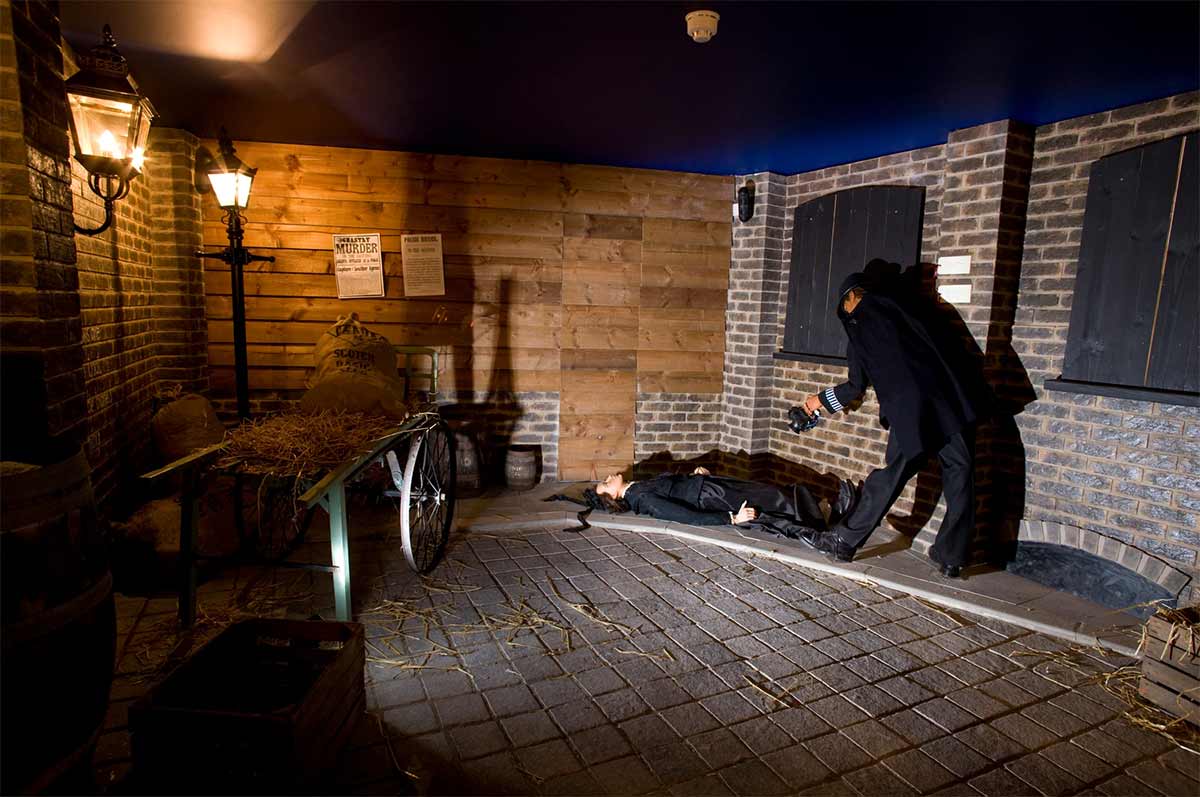
The Replica Crime Scene
Step into a realistic recreation of a crime scene where one of Jack the Ripper’s victims was found. This exhibit offers in-depth insights into the victim’s personal belongings, clothing, and the surrounding environment, providing a firsthand experience of the gruesome crime scenes.
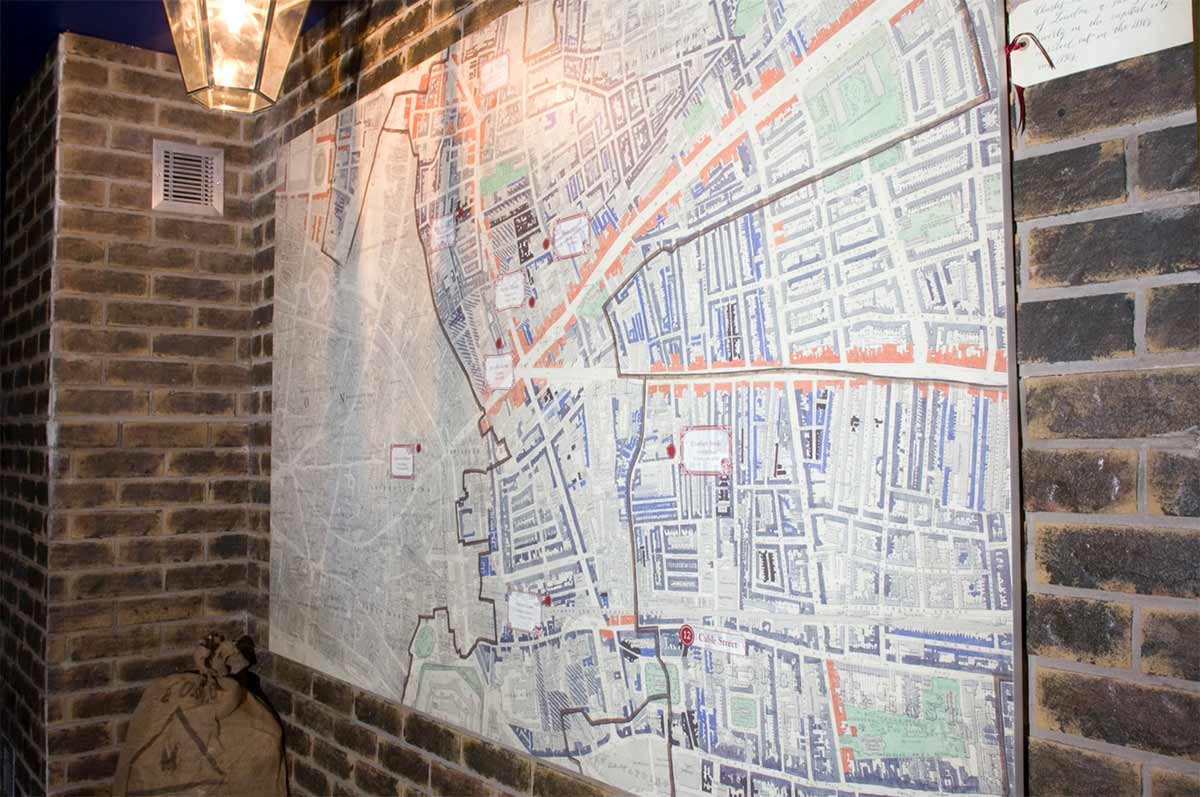
The Victim's Room
Delve into a room dedicated to the five women murdered by Jack the Ripper in 1888. Immerse yourself in typical Victorian-style architecture as you pay tribute to the victims.
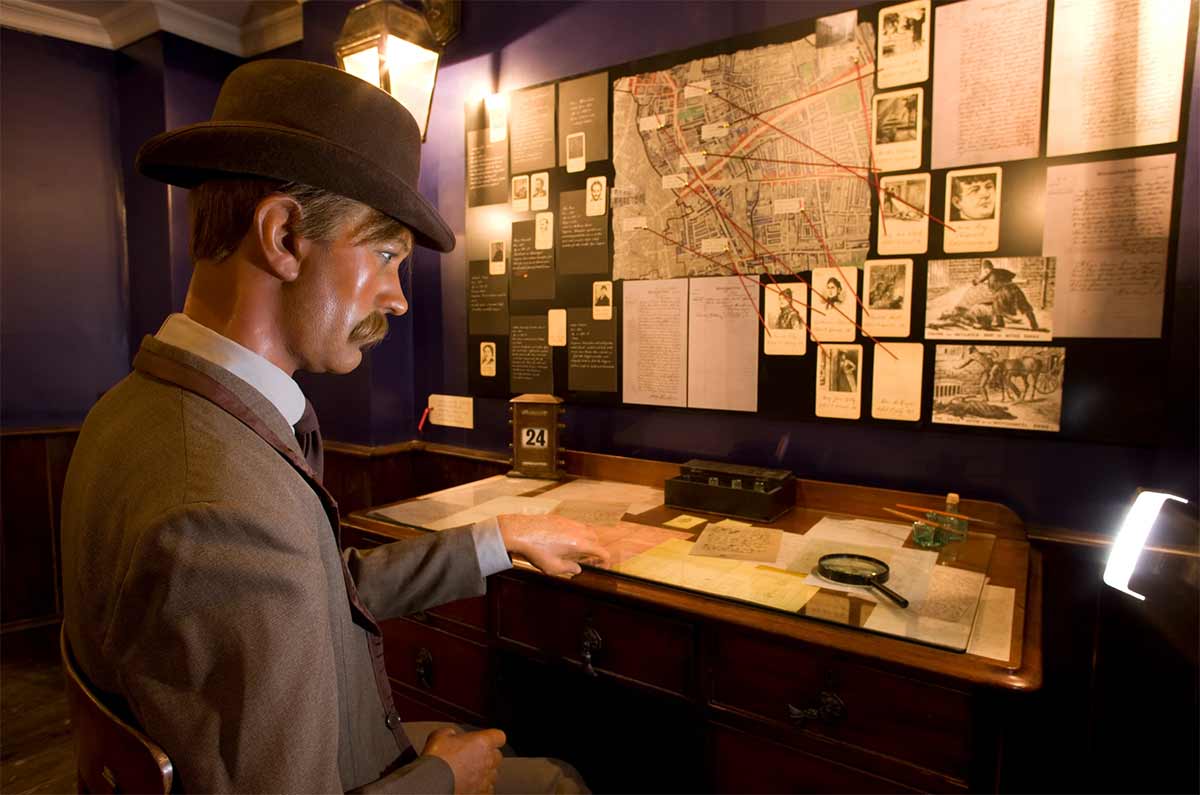
Jack the Ripper's Letter
Explore the intriguing letters received by the police during Jack the Ripper’s murder spree. One particularly infamous letter, “The Dear Boss Letter,” garnered significant attention for detailing the fiend’s plans for the next victim.
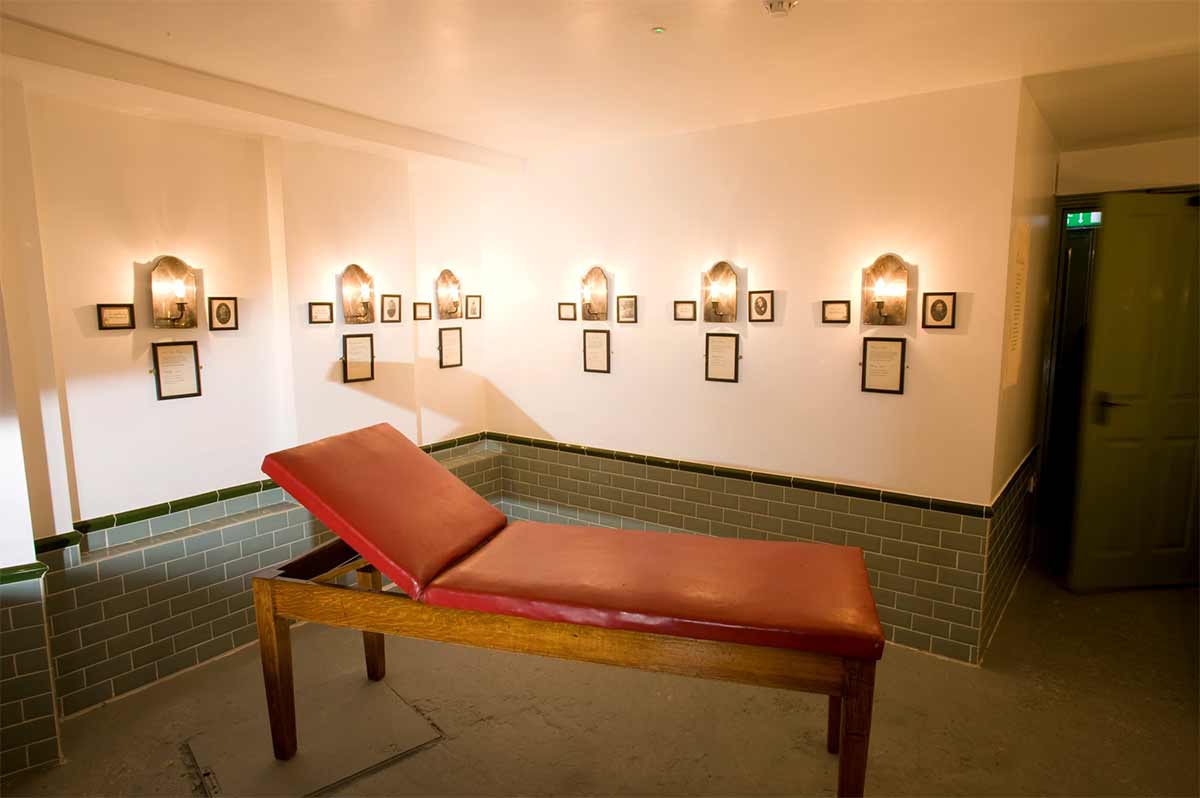
The Suspects Room
Investigate the numerous people who were under scrutiny as potential suspects or accused of being the infamous serial killer. Examine the evidence presented against each suspect and draw your own conclusions about the identity of the potential killer.
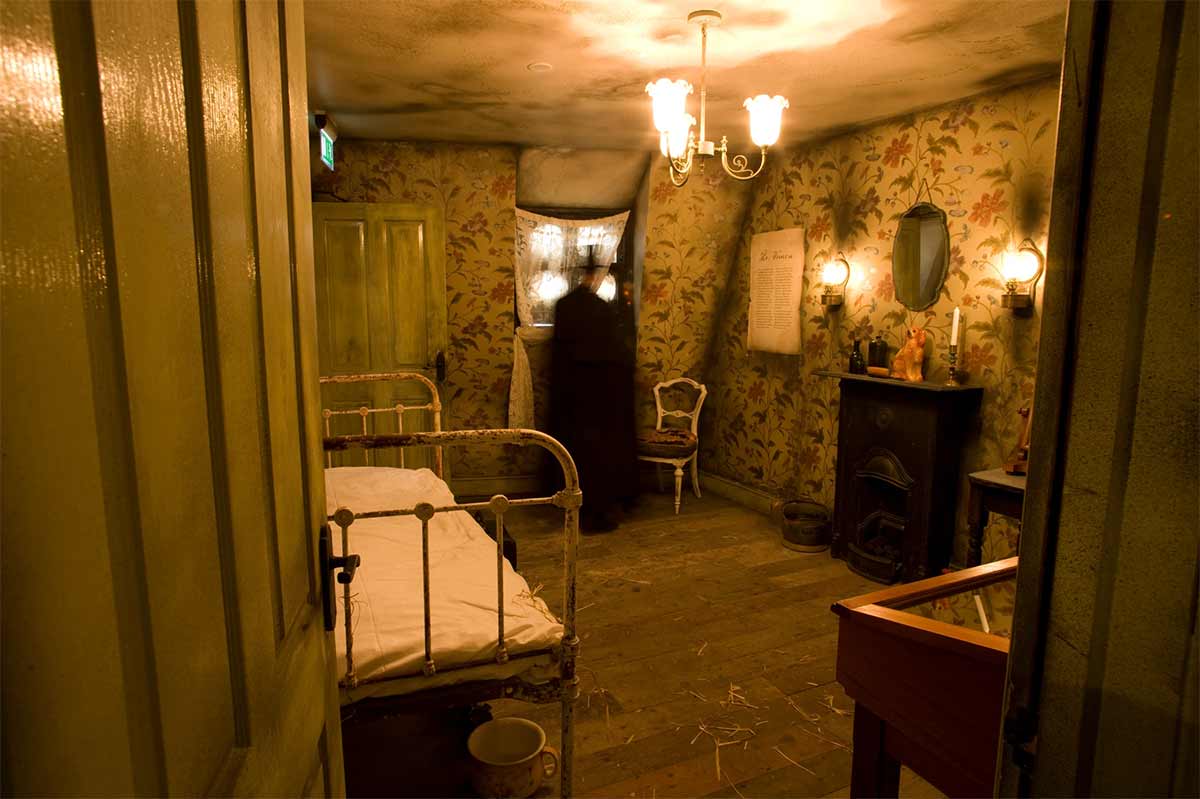
Police Investigation Room
Step into a recreation of the police station where the investigation into the Jack the Ripper mystery unfolded. This room features period-appropriate furniture, actual police records, and artifacts, including crime scene pictures, witness accounts, and newspaper clippings.
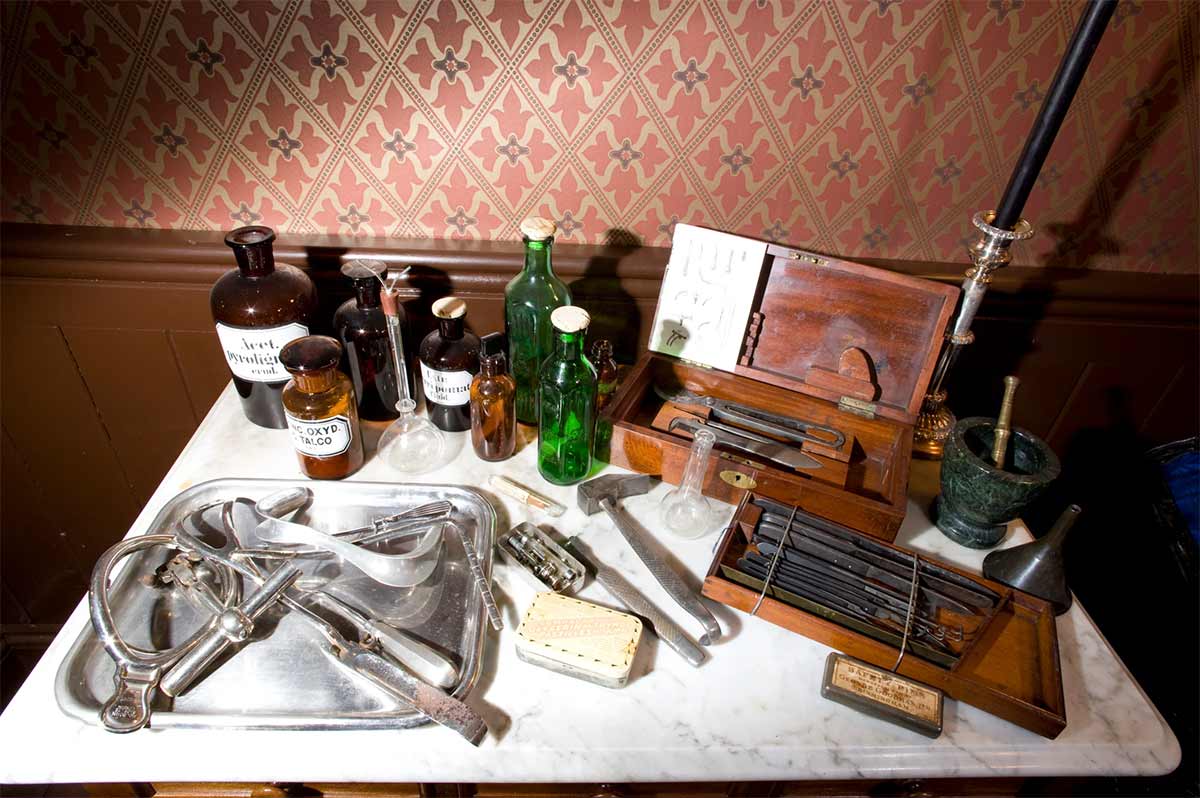
The Morgue
Gain insight into the techniques and practices employed by pathologists and coroners during the time of the Jack the Ripper murders. Learn about the challenges and limitations they faced while determining the cause of death for each victim.
Victorian Living Room
Transport yourself to Victorian-era London, experiencing the sights and sounds of that time. Gain a detailed understanding of the social setting in which the murders took place.
The Secret Room
Embark on an interactive journey with puzzles, games, and challenges that test your comprehension of the Jack the Ripper case. These interactive elements create a unique and engaging museum experience.
Additional Noteworthy Exhibits
The museum also features original artefacts such as policy documents, witness statements, pieces of evidence, authentic autopsy photos, and illustrations of Ripper’s victims. Visitors can explore Jack the Ripper’s history and women’s lives in London’s East End during the late 1880s.
Jack The Ripper Museum Tickets and Tours
Visiting the Jack the Ripper Museum is an intriguing and educational experience. Here’s what you need to know about tickets:
Pricing
Tickets to the Jack the Ripper Museum typically cost £12 when purchased at the door. However, you can save by booking your tickets in advance, which reduces the cost to £10. Please note that prices may be subject to change, so it’s a good idea to check the official website for the most up-to-date information.
Online Booking
To save time and avoid long queues at the ticket counter, booking your tickets online is recommended, especially during peak tourist seasons. Online booking allows a smoother entry process and ensures you won’t miss out on this gripping historical experience.
Combination Tickets and Jack The Ripper Museum Tours
If you’re planning to explore other attractions in London, you may want to consider combination tickets. These tickets often offer discounts when you visit multiple attractions in one day. Check the official website or inquire at the museum for any current combination ticket options.
Jack The Ripper Museum Experience
Visiting the Jack the Ripper Museum is a captivating and immersive journey into the heart of Victorian-era London. As you step through its doors, you’ll be transported back in time to the late 1800s, when the chilling atmosphere of the Whitechapel district comes to life. Here’s what you can expect from your museum experience:
Sensory Engagement
From the moment you enter, the museum envelops you in the sights, sounds, and even the smells of Victorian London. The meticulously designed exhibits create an atmosphere that immerses you in the era, allowing you to witness the streets as they were during the time of Jack the Ripper’s reign of terror.
Interactive Exhibits
The Jack the Ripper Museum offers a range of interactive elements that enhance your understanding of the case. You can explore Victorian-style costume props, providing a tangible connection to the past. Additionally, you’ll encounter a recreation of Jack the Ripper’s “sitting room” filled with period-appropriate books, maps, letters, medical instruments, and other memorabilia related to the infamous figure.
Authentic Artefacts from Whitechapel Murders
The museum houses a remarkable collection of original artefacts and items related to the Whitechapel Murders. You’ll have the chance to view the same whistle that Officer PC Watkins used to call for help after discovering the body of Catherine Eddowes, one of Jack the Ripper’s victims. Original newspaper clippings covering the crimes, as well as the infamous “From Hell” and “Dear Boss” letters believed to be from the killer, are also on display.
Recreated Scenes
Several rooms within the museum recreate scenes from the era, including Mary Kelly’s bedroom as it appeared the night before her tragic death and a Victorian-era morgue complete with an authentic autopsy table. These recreations provide a chilling glimpse into the lives of Jack the Ripper’s victims and the investigations that followed.
Historical Context
The exhibits offer a comprehensive understanding of the Whitechapel Murders, featuring original autopsy photos, illustrations, and medical reports related to the victims. Personal and authentic photographs of the victims and their families humanize the individuals who tragically lost their lives during this dark period in history.
Guided Tours
For a deeper exploration of the exhibits and historical context, consider joining one of the museum’s guided tours. Led by knowledgeable guides, these tours provide valuable insights and narratives that bring the stories of Jack the Ripper and his victims to life.
Sensitivity Warning
It’s important to note that the Jack the Ripper Museum houses a collection of historical materials, photographs, and artefacts that may be sensitive and, at times, gruesome in nature. The exhibits provide an unflinching look into the details of the Whitechapel Murders and the investigations that followed.
Due to the graphic nature of some of the exhibits, the museum may not be suitable for young children or individuals who are easily disturbed or offended by sensitive and gruesome content. Visitors should be prepared to encounter materials that depict the harsh realities of the time, including post-mortem photographs and other related items.
While the museum offers a valuable educational experience for those interested in delving into the history of Jack the Ripper and the Victorian era, it’s essential for potential visitors to be aware of the content’s nature and exercise discretion when deciding whether to explore the exhibits.
History of the Jack the Ripper Museum
The Jack the Ripper Museum, located at 12 Cable Street in Whitechapel, London, has a fascinating history that intersects with the enigmatic tale of Jack the Ripper himself. Founded by Mark Palmer-Edgecumbe, the former head of diversity for Google’s EMEA operations and governor of the Museum of London Docklands, this museum offers a unique perspective on the history of women in London’s East End during the Victorian era.
Why is the Museum Building Significant?
The museum’s establishment in Whitechapel is particularly significant because it was within this very neighbourhood that Jack the Ripper carried out his gruesome and mysterious series of murders between 1888 and 1891. However, instead of glorifying the crimes of Jack the Ripper, the museum aims to shed light on the lives of the women who lived in Whitechapel during this period, many of whom were victims of the Ripper’s terror.
The six-story museum boasts an impressive collection of artefacts, items, and exhibits that were previously unseen by the public. Its dedication to educating visitors about the history of women in Victorian London’s East End, along with its detailed exhibits on Ripper-related crime scenes, has made it a prominent attraction for those intrigued by this dark chapter in history.
The Controversy
Despite the controversy surrounding its opening and the shift in focus from the lives of Whitechapel women to Jack the Ripper himself, the Jack the Ripper Museum continues to provide a thought-provoking and immersive experience for visitors interested in delving into the gripping history of this notorious serial killer and the era in which these chilling events occurred.
Was Jack the Ripper Real?
Yes, Jack the Ripper was a real person, or at least a real serial killer whose identity has never been definitively established. The name “Jack the Ripper” is a pseudonym given to an unidentified individual who committed a series of gruesome murders in the Whitechapel district of London in 1888. These murders, often referred to as the “Whitechapel Murders,” received widespread attention and became one of the most infamous unsolved cases in the history of criminal investigations.
The killer was known for targeting women, particularly prostitutes, and committing brutal acts of violence against them. Despite extensive investigations and numerous suspects, Jack the Ripper was never apprehended, and his true identity remains a mystery to this day.
The case of Jack the Ripper has generated countless theories, books, films, and discussions over the years, with various individuals and suspects proposed as the possible Ripper. While there have been many theories and much speculation, the true identity of Jack the Ripper remains one of the greatest enigmas in the history of crime.
Who Were the Jack the Ripper Victims?
The infamous serial killer known as Jack the Ripper terrorised the streets of Whitechapel, London, between 1888 and 1891, leaving a trail of gruesome murders in his wake. His victims were primarily women, and all of them were brutally murdered in a manner that shocked Victorian London. While the true identity of Jack the Ripper remains a mystery to this day, his victims and the locations of their murders are well-documented. Here are the names and details of the canonical five victims who are widely believed to have been killed by Jack the Ripper:
- Mary Ann Nichols: Mary Ann Nichols, often referred to as Polly Nichols, was the first victim of Jack the Ripper. She was a 43-year-old prostitute, and her body was discovered on August 31, 1888, in Buck’s Row (now Durward Street). Her throat had been slashed, and her abdomen was mutilated.
- Annie Chapman: Annie Chapman, aged 47, was the second victim. Her body was found on September 8, 1888, in the backyard of 29 Hanbury Street. Like Mary Ann Nichols, she had been brutally murdered, with her throat cut and her abdomen extensively mutilated.
- Elizabeth Stride: Elizabeth Stride, also known as “Long Liz,” was murdered on the night of September 30, 1888. Her body was discovered in Dutfield’s Yard, Berner Street (now Henriques Street). While her throat had been slashed, her murder was less mutilating than the previous victims, leading some to speculate that the killer may have been interrupted.
- Catherine Eddowes: Catherine Eddowes was killed on the same night as Elizabeth Stride, September 30, 1888. Her body was found in Mitre Square, and her murder was particularly gruesome. Her throat was slashed, and her face and abdomen were mutilated. Notably, a portion of her ear and her kidney were removed by the killer.
- Mary Jane Kelly: Mary Jane Kelly, known as the Ripper’s final victim, met her gruesome end on November 9, 1888. Her body was discovered in her apartment at 13 Miller’s Court, Dorset Street. Her murder was the most horrifying of all, with extensive mutilations to her face and body.
These five women are commonly referred to as the “canonical” victims of Jack the Ripper, as their murders share certain similarities and are generally attributed to the same killer. However, it’s important to note that there were other murders and attacks in the Whitechapel area during the same period, and the true extent of Jack the Ripper’s crimes may never be fully known.
Jack the Ripper’s Fate: Unresolved Identity
The identity of Jack the Ripper remains one of the most enduring mysteries in the annals of crime history. Despite the extensive investigations conducted by both contemporary authorities and modern-day sleuths, Jack the Ripper’s true identity has never been conclusively revealed. The perpetrator of the Whitechapel murders in 1888 managed to evade capture and disappear into the shadows of history.
Various theories and suspects have been proposed over the years, but none have been definitively proven to be Jack the Ripper. Some believe that the killer may have continued to commit crimes under different aliases, while others suggest that he may have passed away without ever being apprehended. The fate of Jack the Ripper, whether he met justice or vanished into obscurity, remains one of history’s greatest enigmas, continuing to captivate the imaginations of those intrigued by unsolved mysteries and the darker side of Victorian London.
Jack the Ripper Timeline: A Reign of Terror
The timeline of Jack the Ripper’s gruesome activities in the Whitechapel district of London is a chilling record of terror and mystery that unfolded during the late 19th century. The following chronology outlines key events and the sequence of his heinous crimes:
- August 31, 1888 – The First Murder: The reign of terror begins with the brutal murder of Mary Nichols, a prostitute whose throat was slashed and abdomen mutilated.
- September 8, 1888 – Annie Chapman: Just one week later, Annie Chapman becomes the second victim, meeting a gruesome end with her body similarly mutilated.
- September 30, 1888 – Double Murder: A double murder shocks Whitechapel as both Elizabeth Stride and Catherine Eddowes are found dead on the same night, their bodies bearing the Ripper’s signature mutilations.
- November 9, 1888 – Mary Jane Kelly: The Ripper’s fifth and perhaps most gruesome victim, Mary Jane Kelly, meets her end with horrific mutilations in her own apartment.
- February 13, 1891 – Frances Coles: The Ripper’s last suspected victim, Frances Coles, is found dead, although some debate her inclusion in the list of victims.
Throughout these dark months, a climate of fear gripped the East End of London, with the mysterious killer remaining at large. Despite extensive investigations and numerous suspects, the identity of Jack the Ripper has remained a perplexing and unsolved mystery that continues to capture the imagination of amateur detectives, historians, and true crime enthusiasts to this day.
Where is the Jack the Ripper Museum? How to Get There
Discovering the path to the Jack the Ripper Museum in London is as simple as navigating the historic streets of Whitechapel, where the museum’s haunting facade awaits your arrival.
By London Underground (Tube / Metro / Subway)
The nearest station is Tower Hill, just a 7-minute walk away.
![]()
![]()
Tube Zone: Zone 1, the central zone of London’s public transport network.
By Bus
Multiple bus routes, including 15, 42, 78, 100, and RV1, provide easy access to the museum.
By Overground or DLR
The Shadwell station is a convenient 10-minute walk from the museum.
Car Parking for Those Driving
Given the traffic congestion and limited parking spaces in central London, we highly recommend utilising public transport options when visiting the Natural History Museum. However, for those who prefer to drive, limited parking is available nearby, with a public car park on Mansell Street and Shorter Street.
Santander Cycles docking stations
Nearest ones are located on Leman Street and Dock Street.
Walking to the Jack the Ripper Museum
A pleasant and convenient option for those exploring London. You can easily plan your route and calculate timings using TFL’s Journey Planner, which takes into account your starting point and provides detailed directions.
What attractions are there near the Jack the Ripper Museum?
Near the Jack the Ripper Museum, there are several other attractions and places of interest you can explore in the Whitechapel and London’s East End area. Here are some noteworthy options:
The Ten Bells Pub
Located at 84 Commercial Street, this historic pub has connections to Jack the Ripper as some of his victims were known to have frequented it. It’s a must-visit for Ripper enthusiasts.
Whitechapel Gallery
Just a short walk from the museum, the Whitechapel Gallery is a renowned contemporary art space featuring exhibitions, collections, and events.
Brick Lane
Known for its vibrant street art, vintage shops, and diverse culinary scene, Brick Lane is a cultural hub with plenty of cafes, markets, and galleries to explore.
Spitalfields Market
A bustling market offering an array of goods, from vintage clothing to artisanal foods. It’s a great place for shopping and people-watching.
The Royal London Hospital Museum
Located on Newark Street, this museum is situated in the heart of Jack the Ripper territory. It features exhibits on the Whitechapel murders and the history of the hospital.
The East End Street Art Trail
Wander the streets of the East End to discover an ever-changing canvas of street art. Look out for works by famous street artists like Banksy.
Wilton’s Music Hall
Visit one of the world’s oldest music halls, Wilton’s, for a unique theatrical experience in a historic setting.
Dennis Severs’ House
Step back in time at this 18th-century house on Folgate Street, which is set up as a “still-life drama” to recreate the atmosphere of the past.
Aldgate Square
A public square with seating and green spaces, ideal for a leisurely break or a picnic on a sunny day.
Christ Church Spitalfields
It is a stunning 18th-century church known for its architecture and occasional events, including concerts and art exhibitions.
Brady Arts & Community Centre
An arts and community space hosting exhibitions, performances, and cultural events.
Frequently Asked Questions (FAQ) about the Jack the Ripper Museum
What are the museum's opening hours?
The Jack the Ripper Museum is open daily from 9:30 AM to 6:30 PM.
How much do tickets cost?
Tickets are priced at £12 when purchased at the door and £10 when booked in advance.
Is photography allowed inside the museum?
Yes, photography for personal use is permitted inside the museum.
Is the museum wheelchair-friendly?
Yes, the Jack the Ripper Museum is wheelchair-friendly and provides lift access to all floors.
Are there any age restrictions for visitors?
While there are no strict age restrictions, please note that the museum contains sensitive and gruesome photographs and artifacts, making it less suitable for young children.
Can I combine my visit with a tour?
Yes, you can combine your museum visit with one of the daily tours offered, providing a more immersive experience and additional insights into the Ripper’s history. Please check our Jack the Ripper tour offers above.
Additional Resources
Jack the Ripper in Film: A Dark Cinematic Legacy
The infamous Jack the Ripper has left an indelible mark on the world of cinema, with numerous films exploring the mysterious and horrifying tale of his crimes. From gritty documentaries to fictionalized thrillers, here are some notable Jack the Ripper movies:
- “From Hell” (2001): Starring Johnny Depp, this film blends historical accuracy with a touch of supernatural intrigue as it follows Inspector Abberline’s investigations into the Ripper murders.
- “The Lodger: A Story of the London Fog” (1927): Directed by Alfred Hitchcock, this silent film is one of the earliest cinematic depictions of Jack the Ripper, exploring the paranoia surrounding the crimes.
- “Time After Time” (1979): This unique twist on the Ripper legend sees H.G. Wells pursuing the killer through time, leading to unexpected adventures in modern-day San Francisco.
- “Jack the Ripper” (1988): A two-part miniseries starring Michael Caine as Inspector Abberline, offering a comprehensive look at the investigations and suspects.
- “Ripper Street” (2012-2016): While not a movie, this TV series delves into the aftermath of the Ripper murders, focusing on the detectives of H Division as they grapple with crime in Victorian Whitechapel.
Jack the Ripper Books
Jack the Ripper’s enigmatic persona has inspired a plethora of books, both fictional and non-fictional, that delve into the mystery, the suspects, and the era in which the crimes occurred. Here are some noteworthy Jack the Ripper books:
- “The Complete History of Jack the Ripper” by Philip Sugden: A comprehensive non-fiction work that meticulously examines the crimes, victims, suspects, and the historical context.
- “From Hell” by Alan Moore: A graphic novel that combines historical research with a fictionalized narrative to offer a unique and chilling take on the Ripper story.
- “Portrait of a Killer: Jack the Ripper—Case Closed” by Patricia Cornwell: A controversial work that presents a theory about the identity of Jack the Ripper based on modern forensic science.
- “Dust and Shadow: An Account of the Ripper Killings by Dr. John H. Watson” by Lyndsay Faye: A Sherlock Holmes-inspired novel that places the famous detective on the trail of the Ripper.
These movies and books offer a diverse range of perspectives on the Jack the Ripper legend, allowing readers and viewers to explore the enduring fascination with one of history’s most notorious unsolved mysteries.
Images courtesy of Jack the Ripper Museum
